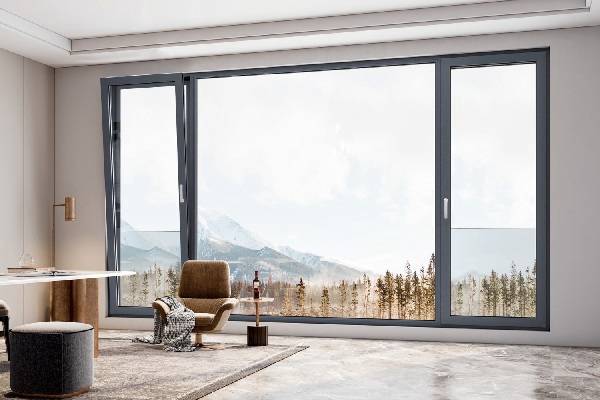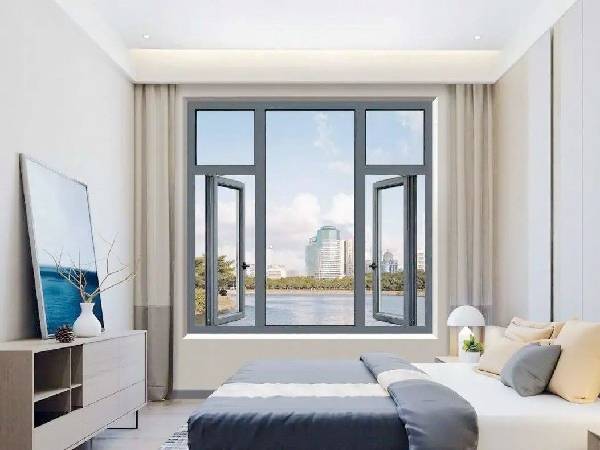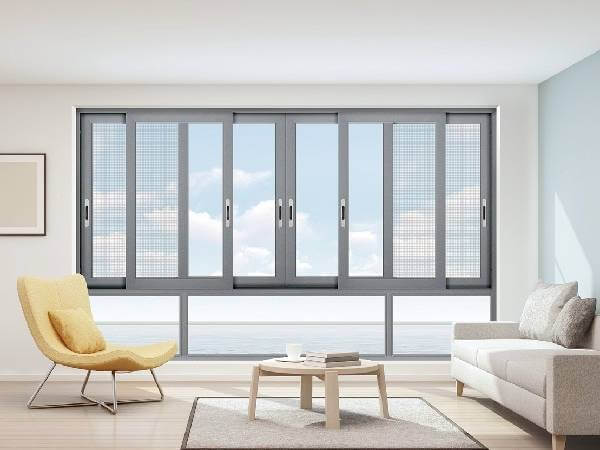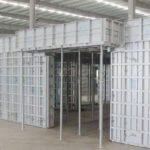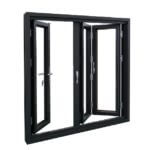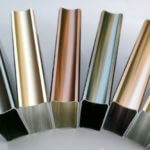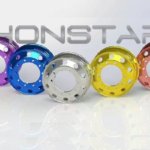Top 6 differences between casement window and sliding window
Top 6 differences between casement window and sliding window
Windows are an indispensable part of each of our homes.
Its function is not only to enhance the light, but also to make the environment in the home warmer.
There are many types of windows on the market now.
In fact, sliding windows and casement windows are two common decoration methods, but many people do not know these two methods very well.
Honstar will talk about the difference between sliding window and casement window.
Sliding and casement windows have their own advantages with the same glass and accessories.
The following will discuss their respective characteristics in detail in terms of appearance, performance, processing and price of both windows.
1. Appearance difference
Casement windows only take up a small part of the entire window, and the division flexibility is relatively large.
It can make the facade effect of any line.
It is spacious, bright and transparent.
It is more suitable for high-end real estate with strict requirements on the overall effect of the building.
Sliding windows are basically the same size as each window, occupying a larger area, and relatively speaking, the area of the window is also relatively large.
Because the sliding window can only be pushed and pulled horizontally, it cannot match the fixed glass of the large grid.
2. Opening method difference
The casement window connects the window sash and the window frame with a hinge and opens and closes in a rotating manner.
After the window is opened, it takes up some space at a certain angle.
The sliding window is opened or closed by sliding left and right or up and down on the track, and the parallel movement does not take up space.
3. Performance difference
From the performance of the three aspects of wind pressure resistance, water tightness and air tightness of windows, casement windows are generally better than sliding windows.
Wind pressure resistance:
It refers to the ability of doors and windows not to be damaged or malfunctioned under the action of wind pressure when the doors and windows are closed.
The cross-sectional area of aluminum profile of the casement window is small, and the design requirements of the stressed member of the window are high, so the wind pressure resistance of the casement window is better.
Casement windows generally have a small profile section, but their main force-bearing members are often split or vertical materials.
These main force-bearing members will be strengthened accordingly during the design process, so their wind pressure resistance is better.
Sliding window profiles are generally relatively large in cross-section, and it stands to reason that their wind pressure resistance should be better.
But as long as in-depth analysis is found, the main force-bearing member is often a middle fan material, and the upper and lower stiles only rely on pulleys to bear the wind load in the horizontal direction, so its wind pressure resistance performance is generally not ideal.
Water tightness:
It refers to the ability to prevent rainwater leakage when the window is normally closed and the wind and rain act simultaneously.
The watertightness of windows depends on the sealing effect of the opening part.
Casement windows are generally sealed with rubber strips, while sliding windows are generally sealed with wool strips.
The sealing effect of rubber strips is generally better than that of wool strips.
The sealing performance of casement windows using rubber strips is better than that of sliding windows.
Airtightness:
It refers to the ability to resist the penetration of air in the normally closed state.
Casement windows are mostly sealed with window handles or sky and earth locks for better sealing.
Most of the sliding windows are locked with hook locks or latches, and the sealing effect is average.
4. Insulation effect difference
The thermal insulation effect of casement windows and sliding windows is mainly determined by the sealing strip and locking method.
Casement windows are generally sealed with sealing rubber strips, while sliding windows are mostly sealed with wool tops.
In contrast, the sealing effect of rubber strips is better.
Casement windows are generally locked and sealed with window handles or sky and earth locks, while sliding windows are locked with hook locks or latches, and their sealing effect is not as good as that of casement windows.
Therefore, the thermal insulation performance of casement windows is better.
5. Processing difference
In terms of processing and production, sliding windows are generally simple in structure and have no special requirements for equipment, so they are convenient for on-site processing and production.
The casement windows need to be connected with aluminum alloy corners, and a good corner machine is needed to produce excellent casement windows.
6. Price difference
In terms of price, there is little difference between casement windows and sliding windows of the same grade.
The price of casement windows of the same quality is slightly higher than that of sliding windows.
There are many factors that affect the price of doors and windows, so the price is not certain.
Even in the case of the same aluminum profile, the prices of different regions and brands are also different.
What are the pros and cons of casement windows?
Pros:
⭐Large area, good sealing, sound insulation, heat preservation and impermeability.
⭐It is convenient to clean and does not take up space.
⭐Simple structure, 100% open, good air tightness, high insulation performance.
⭐ Good safety and anti-theft performance.
Cons:
☀Casement windows can only be opened outwards or inwards.
Opening inwards will occupy the internal space.
It is not suitable for small spaces.
If the total window width is small, the view is relatively poor.
☀If you choose outward-opening windows, the quality of the windows is very important, because outward-opening windows are prone to damage in strong winds, and there may be dangers such as glass shattering or window sash falling.
What are the pros and cons of sliding windows?
Pros:
⭐The window width is large, the vision is wide, and the lighting rate is high.
⭐Beautiful, simple, easy to clean, flexible to use, and long in service life.
⭐Even if the screen window is installed, it is easy to open and takes up less space.
Cons:
☀The two windows cannot be opened at the same time.
☀They can only be opened halfway, so the ventilation effect and sealing performance will be poor.
Honstar Aluminum Products Co., Ltd has been an aluminum industry leader for over 12 years in manufacturing precision aluminum parts, window aluminum profiles and door aluminum profiles.
We focus exclusively on producing the smallest, most complex, precision aluminum parts, custom aluminum extrusions, standard aluminum extrusions and floor covering aluminum profiles.
Contact us now for your windows and doors aluminum profile order, offer the total solution and one-stop service for your request.

